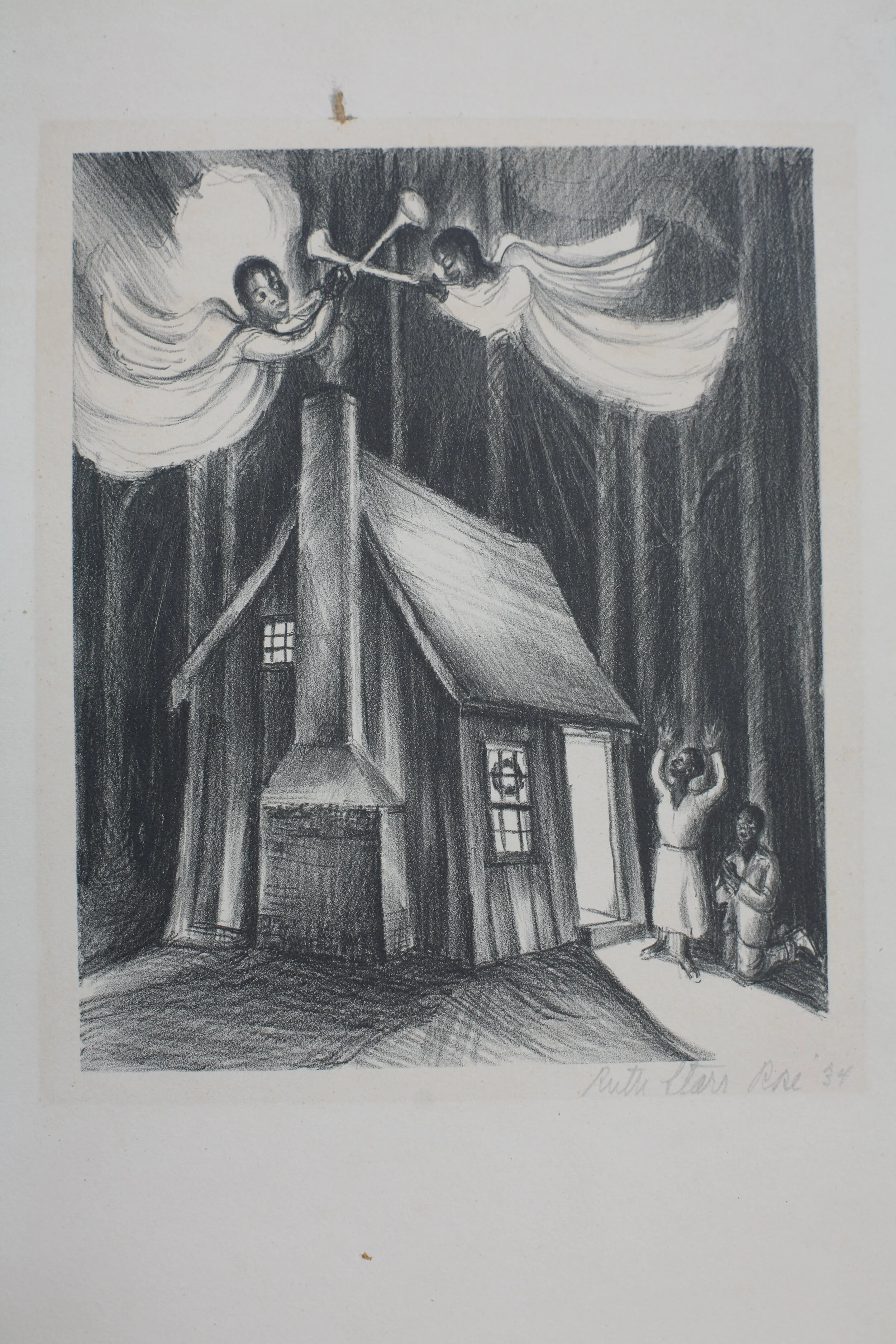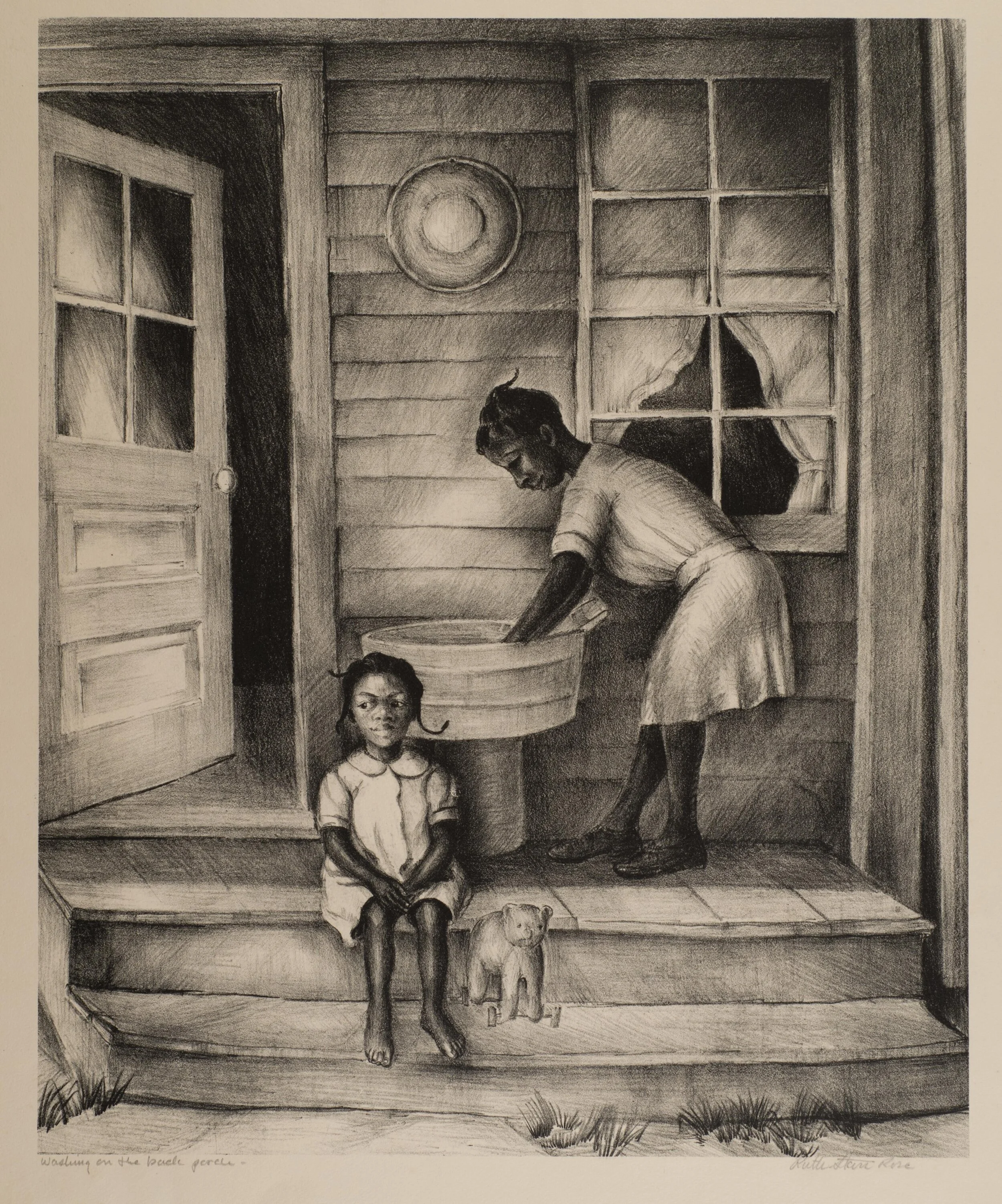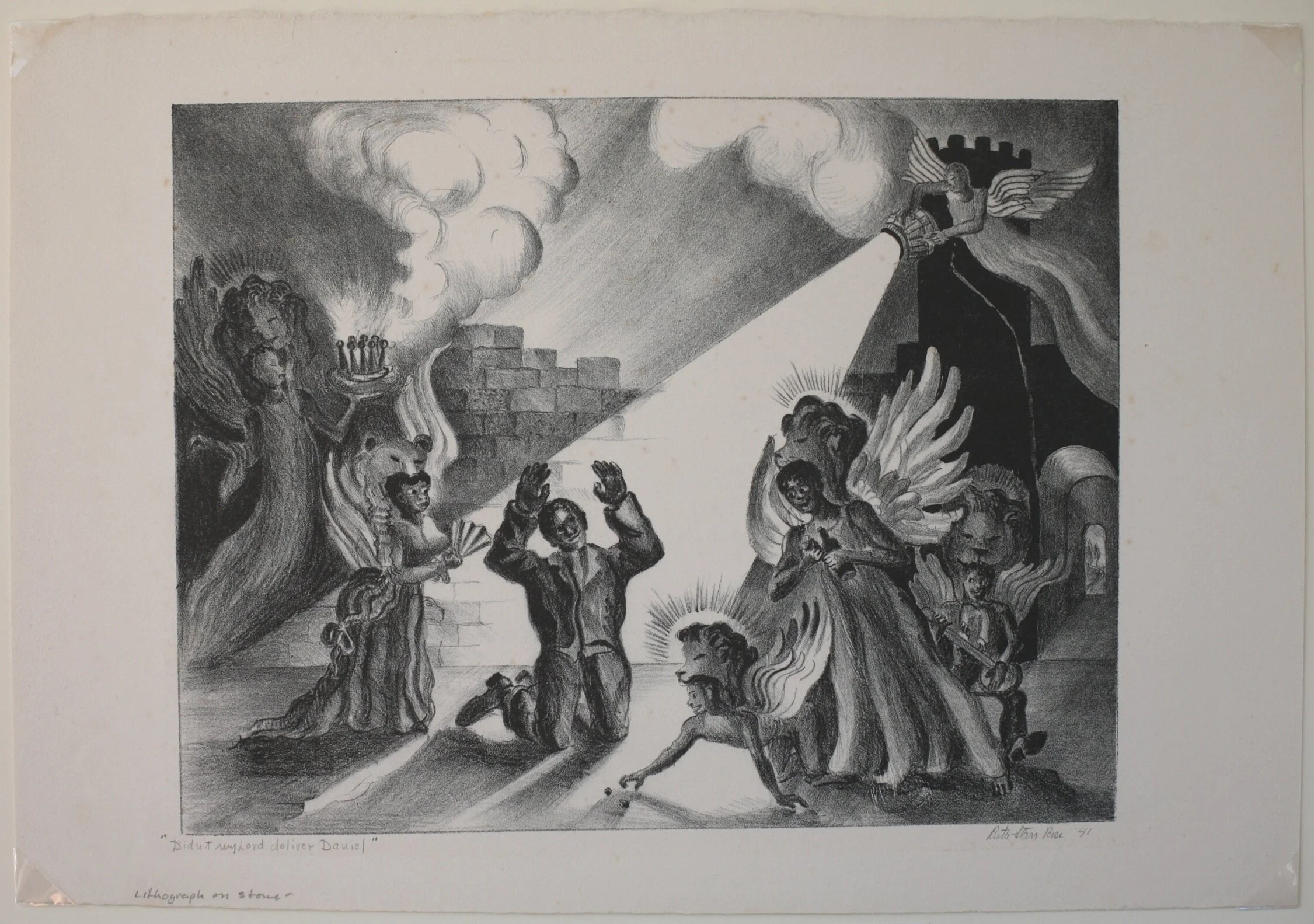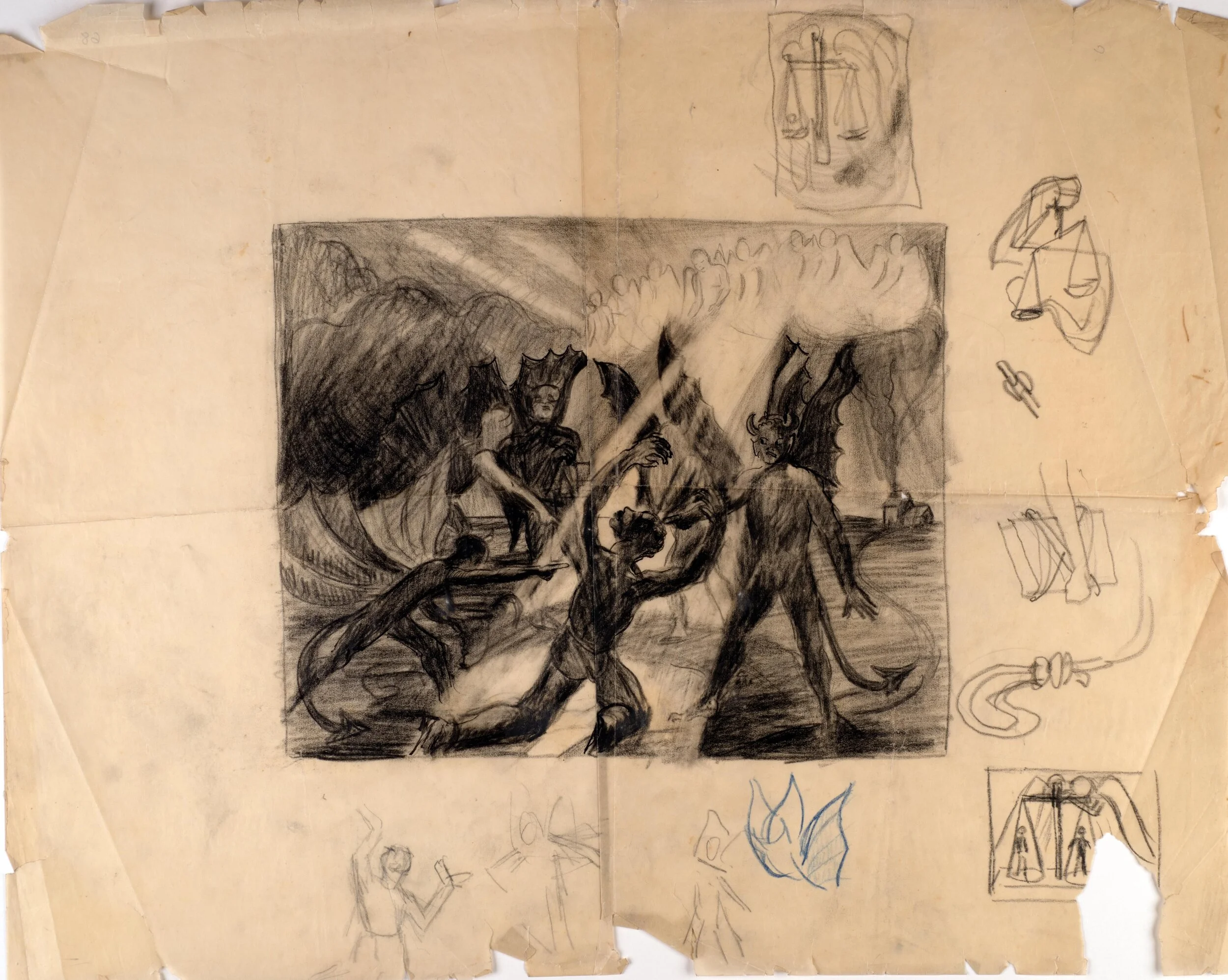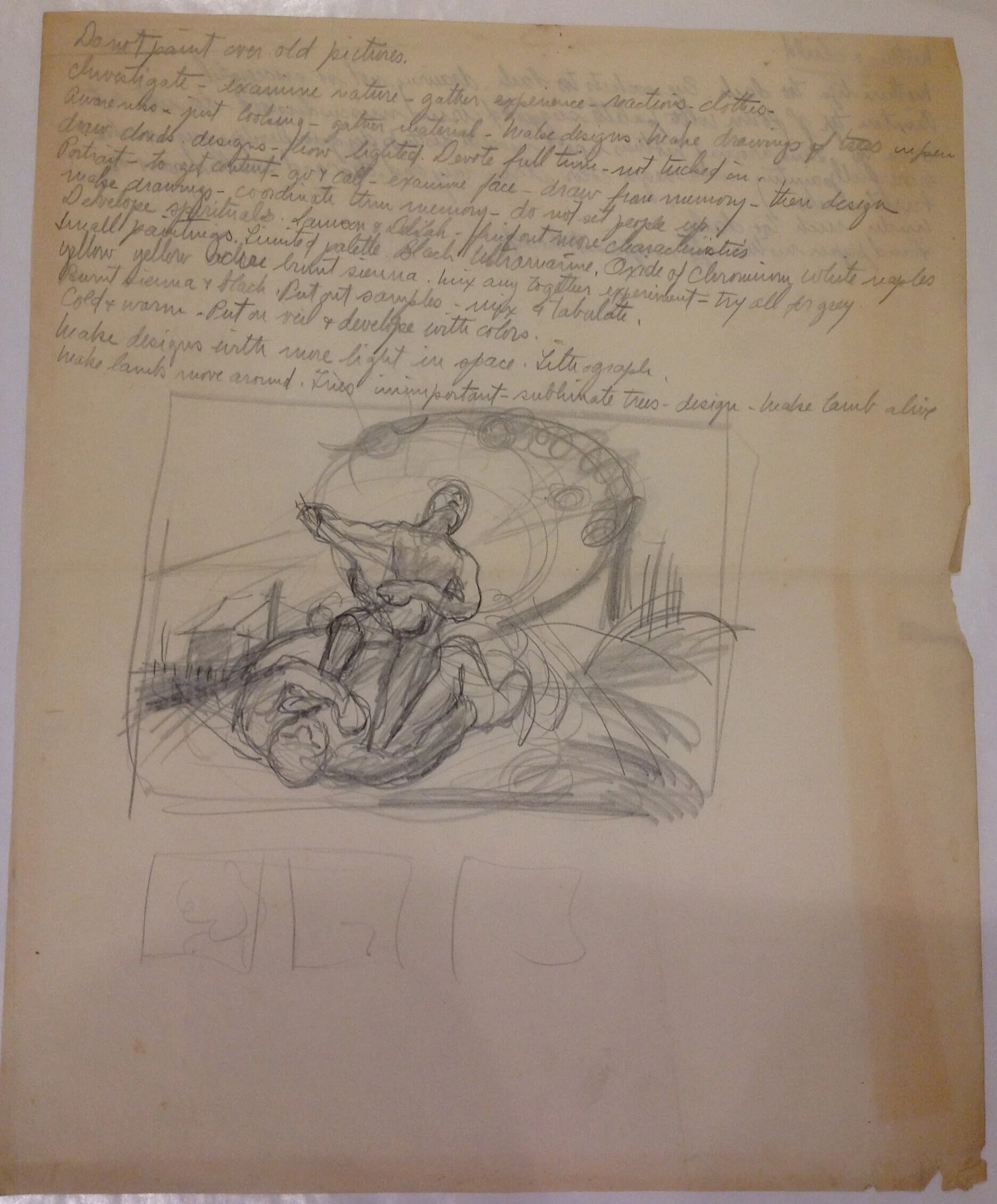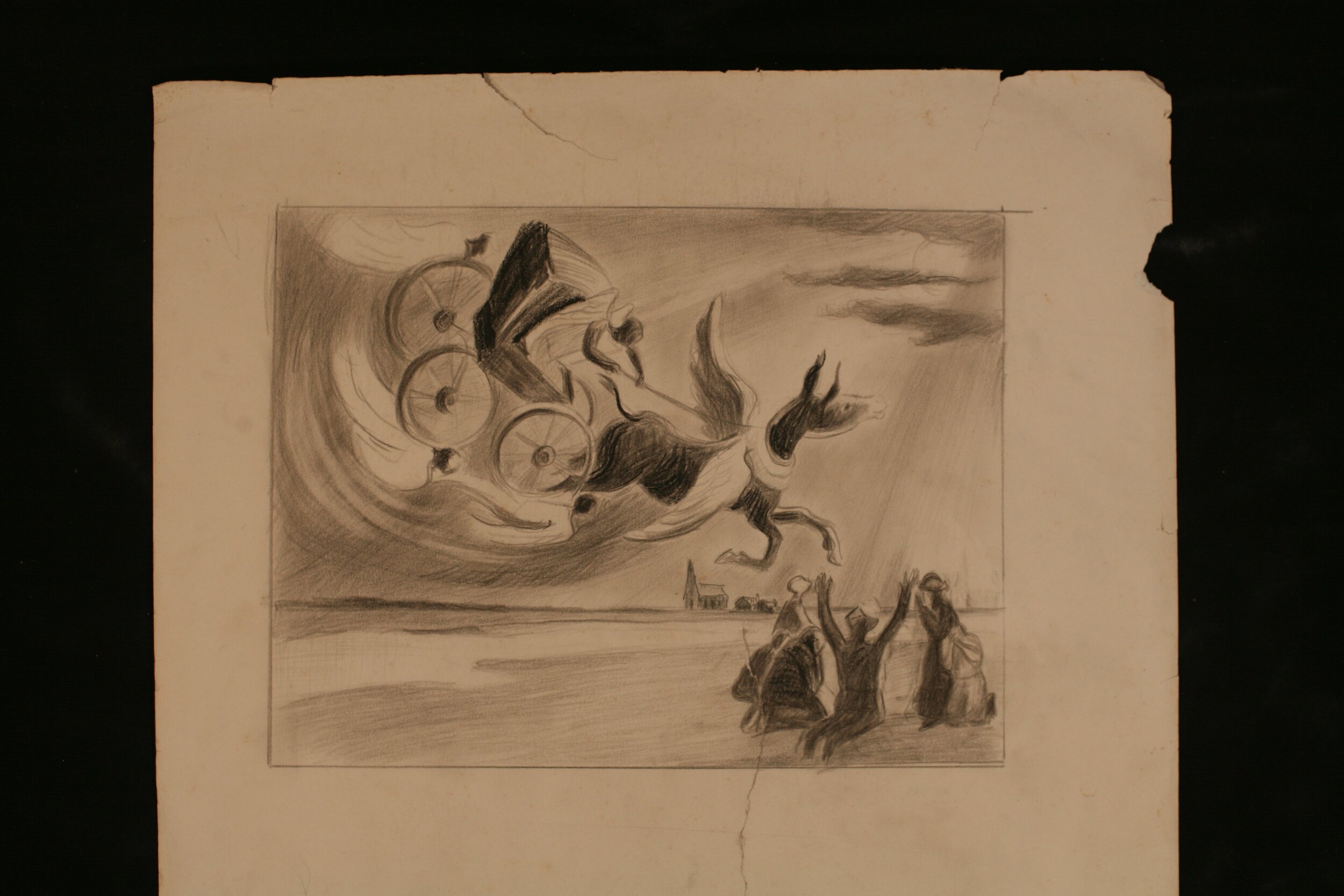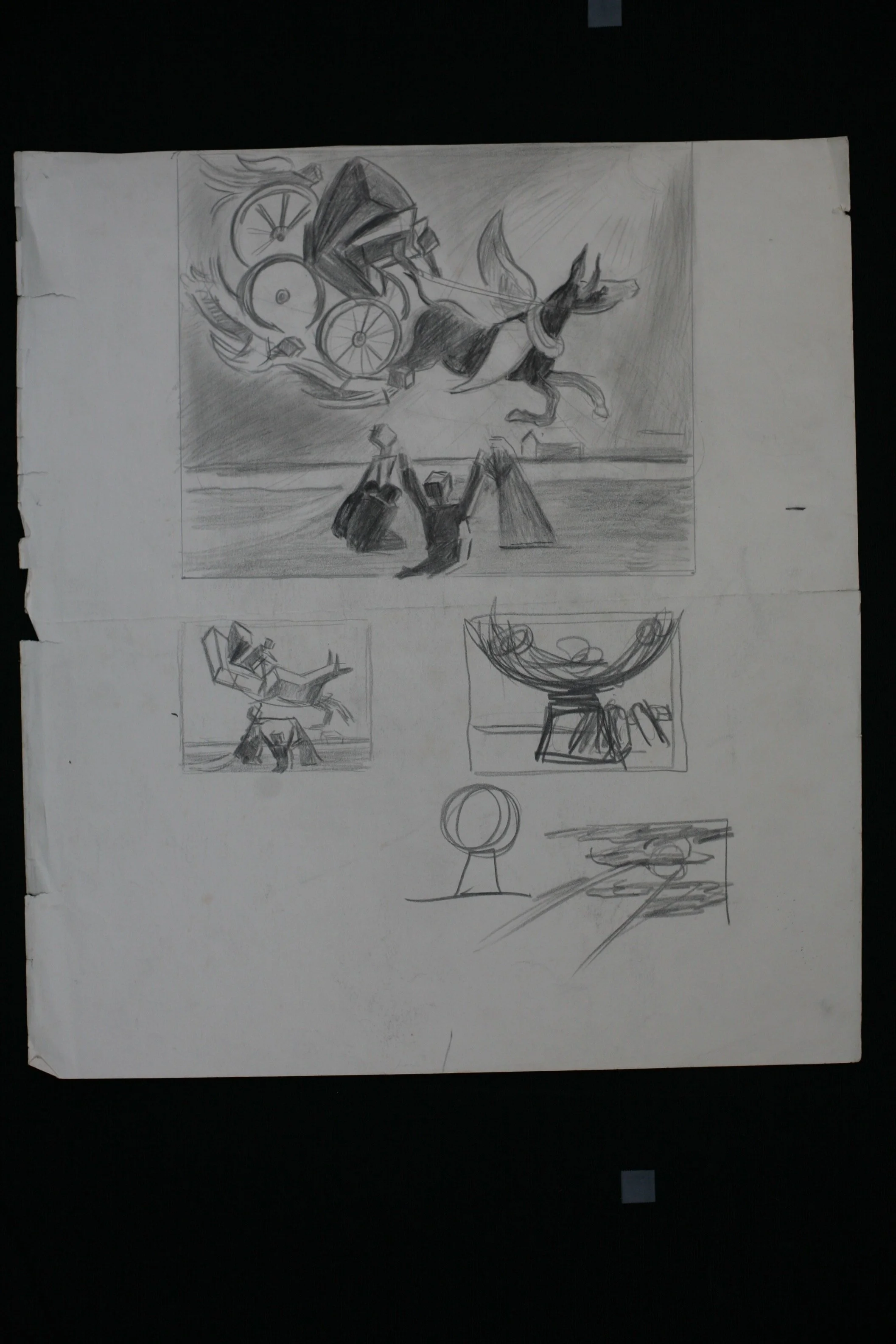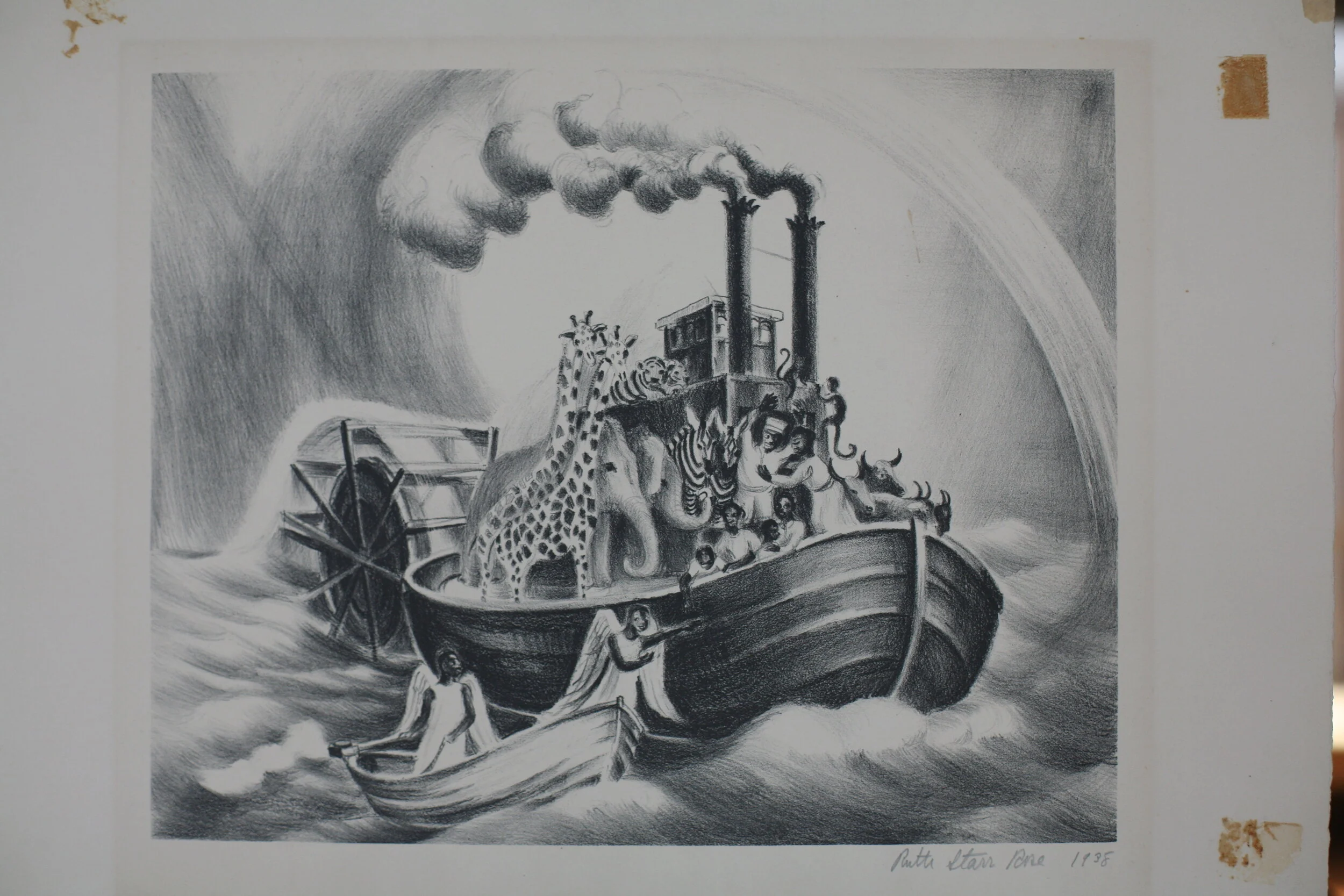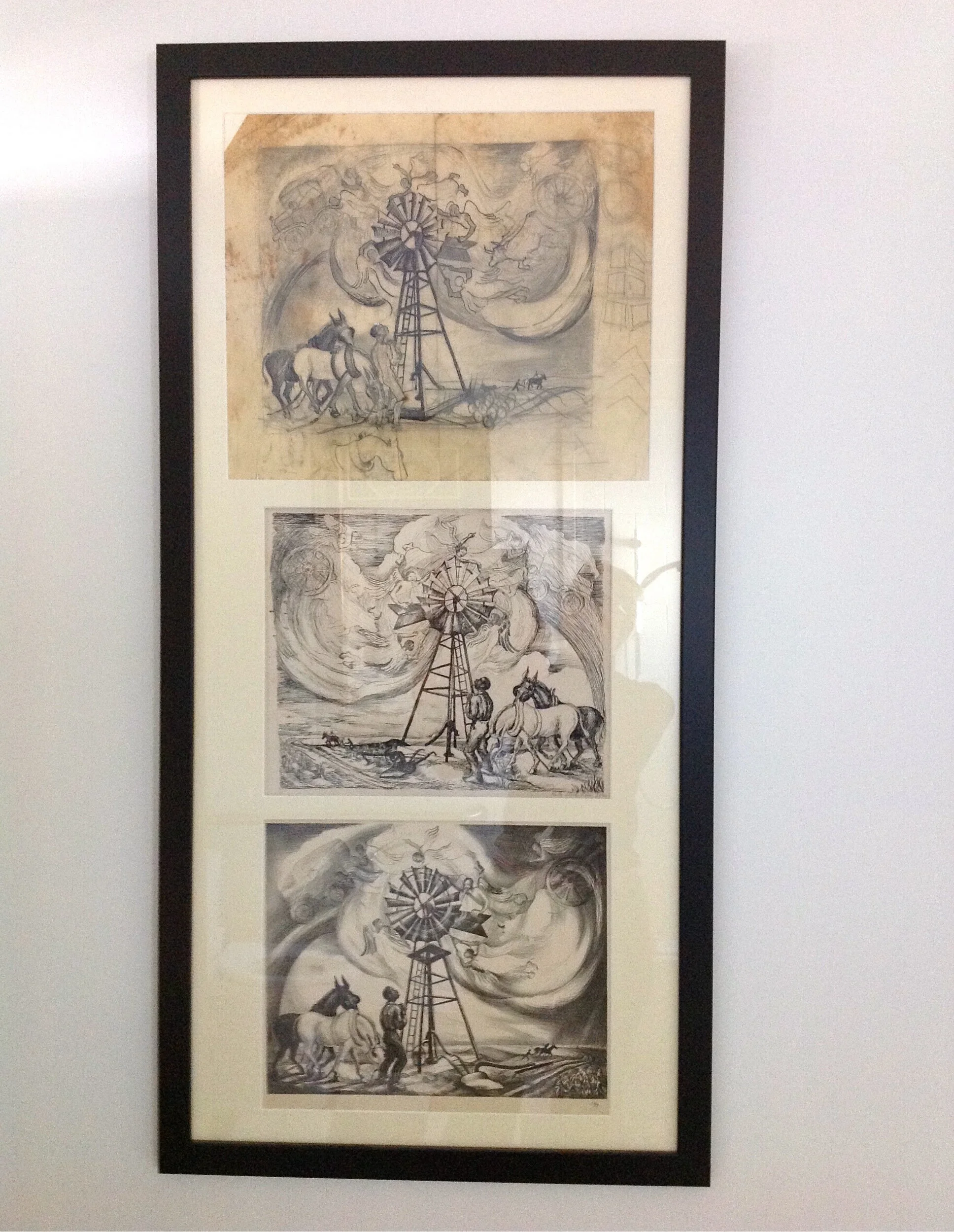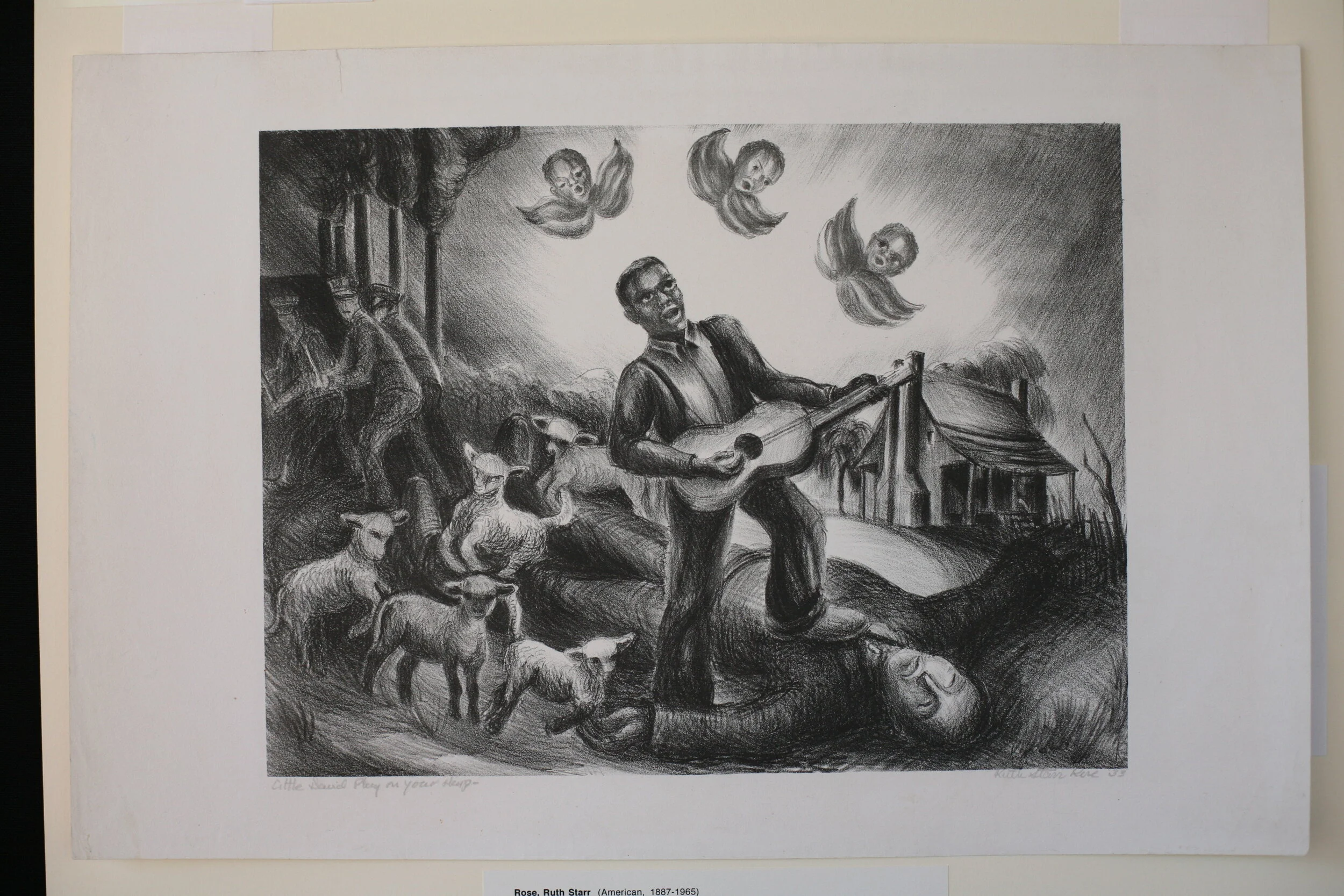EAST WALL
This wall represents a continuation of the story of daily life, and segues into the higher plane of spirituality.
Select a painting below to learn more
INTRODUCTION TO AFRICAN AMERICAN SPIRITUALS
Negro spirituals spring from a spiritual need that was once acute and is still very real— we must not forget that they are deeply religious songs. Right now in the little remote churches all over the South, quartets are singing for the people—not for radio fame—but for the simple Christian duty of helping souls to find heaven. Their groups of singers are in deadly earnest and full of religious zeal. They come out of the wheat fields and tomato patches, right from the threshing, the crab house, the oyster shucking, to sing for their own people. Very many of these quartets cannot read a note of music, yet so phenomenal is their musical sense that they make an orchestral harmony, with savage, haunting undertones, out of a simple song.
The singing of these black Americans is one of the sounders of the new world.
–Artist Ruth Starr Rose, 1935
The historic churches of Copperville and Unionville, Maryland were built in the 19th century. Land grants around the structures were provided to courageous African American families who fought in the Civil War. The village, once part of an extensive landholding belonging to the powerful Lloyd family of Wye, was notable for being Frederick Douglass’s childhood home. Named for the prominent African American Copper family, Copperville was originally settled by John Copper, Philip Moaney, and Solomon Deshields; and the Unionville church also held within its congregation descendants from some of Maryland’s earliest and most courageous black founding families.
Select a painting below to learn more






